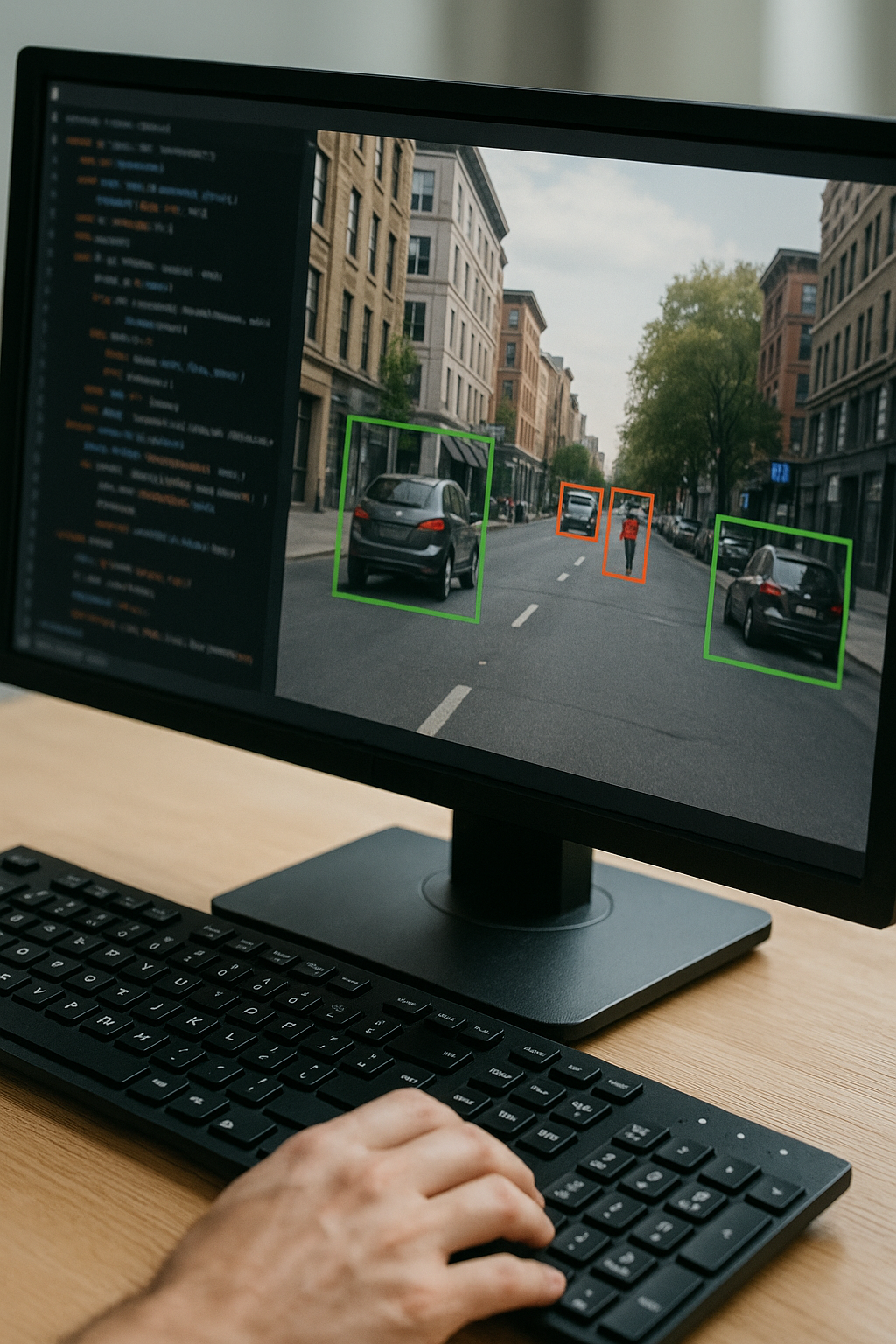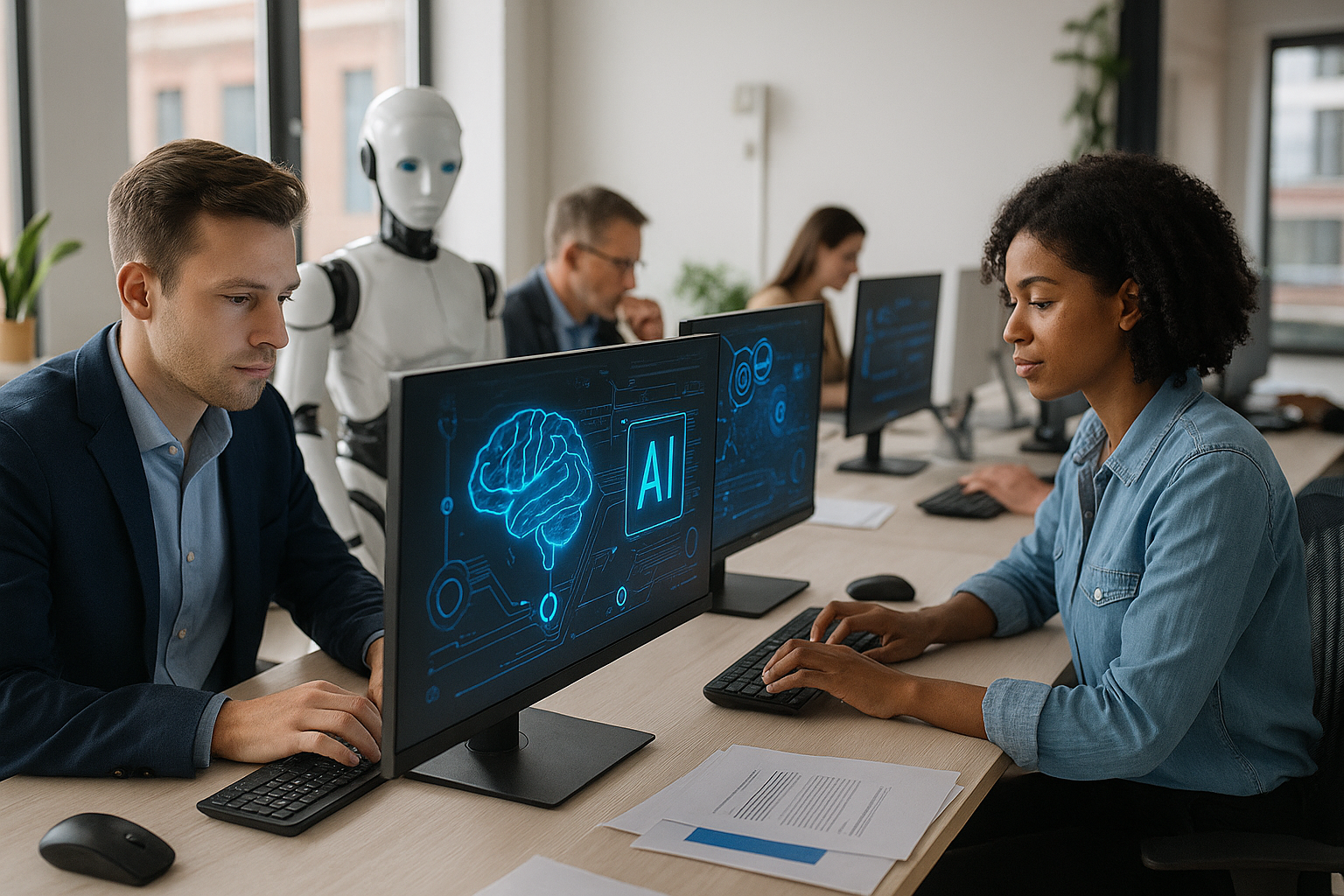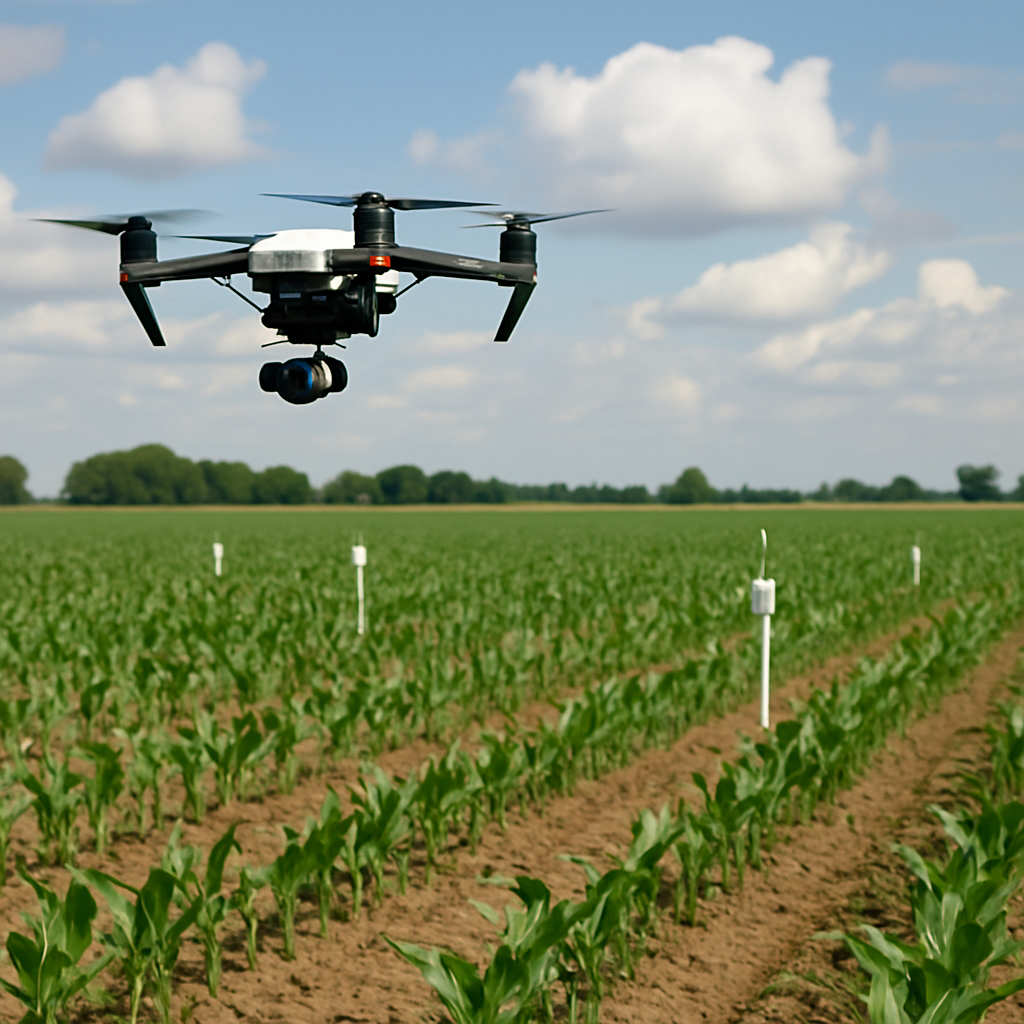Groundbreaking AI Developments
Groundbreaking AI Developments Reshaping Our World This Week
In the fast-paced realm of artificial intelligence, each week brings new marvels and breakthroughs. This week was particularly eventful, with seven major developments that promise to reshape industries, advance scientific understanding, and transform our daily lives. Let's dive deep into these exciting AI stories.
1. OpenAI Unveils GPT-5 with Unprecedented Multimodal Capabilities
OpenAI has once again redefined the boundaries of AI with the release of GPT-5, a quantum leap forward in language model technology. This latest iteration doesn't just improve upon its predecessor; it introduces a new paradigm in AI capabilities.
Key Features:
- Seamless integration of text, image, and audio processing
- Ability to generate photorealistic images from text descriptions
- Real-time transcription and translation of spoken language
- Creation of short video clips based on written scenarios
Technical Advancements:
GPT-5 boasts a staggering 100 trillion parameters, dwarfing GPT-4's 1.76 trillion. This massive increase allows for more nuanced understanding and generation across multiple modalities. The model utilizes a novel architecture that combines transformer-based language processing with convolutional neural networks for image analysis and recurrent neural networks for audio processing.
Potential Applications:
- Content Creation: Automated generation of multimedia content for marketing, entertainment, and education.
- Accessibility Tools: Advanced speech-to-text and text-to-speech capabilities for individuals with hearing or visual impairments.
- Human-Computer Interaction: More natural and intuitive interfaces that can understand and respond to multiple input types.
Ethical Considerations:
With such advanced capabilities, concerns about deepfakes and AI-generated misinformation have intensified. OpenAI has implemented robust watermarking techniques and is working with policymakers to establish guidelines for responsible use.
2. Google's DeepMind Achieves Breakthrough in Protein Folding Prediction
Building on the success of AlphaFold, Google's DeepMind has announced AlphaFold 3, a significant leap forward in protein structure prediction. This new model can now accurately predict the structure of protein complexes, opening new frontiers in biological research and drug discovery.
Technical Advancements:
- Improved accuracy in predicting protein-protein interactions
- Ability to model large, multi-chain protein complexes
- Integration of evolutionary and physical constraints in the prediction process
Methodology:
AlphaFold 3 utilizes a combination of deep learning techniques, including attention mechanisms and graph neural networks, to analyze amino acid sequences and predict 3D structures. The model was trained on a vast database of known protein structures and validated against recently solved structures not included in the training data.
Implications for Science and Medicine:
- Accelerated drug discovery: By accurately predicting how proteins interact, researchers can design more effective drugs with fewer side effects.
- Understanding disease mechanisms: Insights into protein complexes could shed light on the molecular basis of various diseases.
- Advancements in synthetic biology: Improved protein structure prediction could lead to the design of novel proteins with specific functions.
Collaboration and Open Science:
DeepMind has committed to making AlphaFold 3 freely available to the scientific community, continuing their tradition of open science. They've also announced partnerships with several pharmaceutical companies to explore practical applications in drug development.
3. Tesla Releases Full Self-Driving Beta v12.0
Tesla has rolled out version 12.0 of its Full Self-Driving (FSD) Beta software to a select group of testers, marking a significant milestone in the journey towards autonomous vehicles. This update brings substantial improvements in navigation and decision-making capabilities.
Key Enhancements:
- Improved navigation in complex urban environments
- Better handling of construction zones and temporary road changes
- More natural interactions with pedestrians and cyclists
- Enhanced ability to predict and respond to other drivers' behaviors
Technical Details:
FSD Beta v12.0 utilizes a neural network trained on over 10 billion miles of real-world driving data. The system now processes inputs from cameras, radar, and ultrasonic sensors at a rate of 250 frames per second, allowing for near-instantaneous decision-making.
New Features:
- Adaptive Speed Control: Automatically adjusts speed based on road conditions and traffic flow
- Advanced Lane Changes: Executes smooth lane changes in heavy traffic, including merging onto highways
- Improved Object Recognition: Can now distinguish between a wider variety of road users and obstacles
Regulatory and Safety Considerations:
While this update brings Tesla closer to its goal of full autonomy, the company emphasizes that drivers must remain attentive and ready to take control. Tesla is working closely with regulators to ensure compliance with evolving autonomous vehicle standards.

4. IBM Quantum Computer Breaks 1000-Qubit Barrier
IBM has unveiled its first quantum processor with over 1000 qubits, a milestone that brings us closer to the realm of practical quantum computing. This achievement represents a significant step in overcoming the scalability challenges that have long plagued quantum systems.
Technical Specifications:
- 1,121 superconducting qubits
- Quantum Volume of 128, indicating improved circuit depth and connectivity
- Error rates below 0.001 for single-qubit gates and below 0.01 for two-qubit gates
Cooling and Control:
The new processor requires cooling to near absolute zero (-273.15°C) and utilizes advanced cryogenic control systems to maintain qubit coherence. IBM has developed new techniques for wiring and signal processing to manage the increased complexity of the system.
Potential Applications:
- Cryptography: Improved ability to factor large numbers, with implications for current encryption methods
- Material Science: More accurate simulations of molecular structures for developing new materials
- Complex System Modeling: Enhanced capabilities for modeling financial markets, climate systems, and other complex phenomena
Challenges and Future Directions:
While this breakthrough is significant, achieving quantum supremacy (the point at which quantum computers can solve problems intractable for classical computers) still requires further advances in error correction and qubit quality. IBM has outlined a roadmap to reach 4,000 qubits by 2025.
5. Meta Introduces Advanced AI-Powered Content Moderation System
Facebook's parent company, Meta, has launched a new AI-driven content moderation system across its platforms, representing a significant advancement in the fight against harmful online content.
Key Capabilities:
- Advanced natural language processing for text analysis
- Computer vision algorithms for image and video content
- Cross-platform correlation to identify coordinated misinformation campaigns
Performance Metrics:
- 40% reduction in the spread of misinformation
- 60% increase in detection of subtle forms of hate speech
- 80% improvement in identifying and removing terrorist content
Technical Approach:
The system uses a combination of transformer-based language models and convolutional neural networks, trained on a diverse dataset of content from multiple languages and cultures. It employs federated learning techniques to improve performance while maintaining user privacy.
Ethical Considerations:
Meta has established an independent oversight board to review contentious decisions and has committed to regular audits of the system's performance across different demographics to mitigate bias.
6. Microsoft Announces AI-Enhanced Office Suite
Microsoft has revealed plans to integrate advanced AI capabilities across its entire Office suite, promising to revolutionize productivity and creativity for millions of users worldwide.
New Features:
- Word: AI writing assistant that can suggest improvements and generate entire paragraphs
- Excel: Automatic formula creation and data visualization tool
- PowerPoint: AI-driven presentation design from simple outlines
- Outlook: Smart email prioritization and response suggestions
Technical Details:
The AI enhancements are powered by a large language model fine-tuned on domain-specific data for each application. The system utilizes transfer learning techniques to apply general language understanding to specialized tasks within each Office application.
Integration and Customization:
Users will have granular control over AI assistance levels, and organizations can customize the AI's knowledge base with company-specific information and style guides.
Privacy and Security:
Microsoft emphasizes that all AI processing occurs on-device or within the user's cloud environment, ensuring that sensitive data is not shared with external systems.
7. Boston Dynamics Demonstrates Next-Gen Humanoid Robot
Boston Dynamics has unveiled Atlas 2.0, its latest humanoid robot, showcasing unprecedented agility and dexterity that brings us closer to robots capable of effectively assisting humans in real-world scenarios.
Key Capabilities:
- Complex task execution: Opening doors, lifting heavy objects, simple acrobatic maneuvers
- Improved balance and fine motor control
- Advanced sensory perception and environmental awareness
Technical Specifications:
- 28 hydraulically actuated joints for fluid movement
- Custom-designed lightweight but strong materials for improved power-to-weight ratio
- Advanced AI system for real-time decision making and task planning
Sensor Suite:
- LIDAR for 3D mapping and navigation
- Stereo vision cameras for object recognition
- Force sensors in feet and hands for precise interaction with objects
Potential Applications:
- Disaster response and search-and-rescue operations
- Assistance in manufacturing and construction
- Elderly care and support for individuals with mobility impairments
Ethical and Societal Implications:
The development of such advanced humanoid robots raises questions about the future of work and the need for policies to manage the integration of robots into various sectors of society.
These seven developments represent just a fraction of the ongoing innovation in the AI field. The pace of advancement is breathtaking, with each breakthrough opening new possibilities and challenges.
Want to stay at the forefront of this AI revolution? Sign up for our weekly newsletter and gain exclusive insights into the latest AI breakthroughs. Our team of experts provides in-depth analysis, exclusive interviews with AI pioneers, and early access to cutting-edge research. Whether you're a tech enthusiast, a business leader, or a policymaker, our newsletter will equip you with the knowledge to navigate and shape the AI-driven future.
Don't just witness the AI revolution – be part of it. Join our community of forward-thinkers and decision-makers who are using AI to transform industries and improve lives. Subscribe now and ensure you're always one step ahead in the fast-paced world of artificial intelligence. The future is being written in code – make sure you can read it!
Sign Up For Our Weekly Newsletter and Get Your FREE Ebook " AI For Everyone - Learn the Basics and Embrace the Future"











